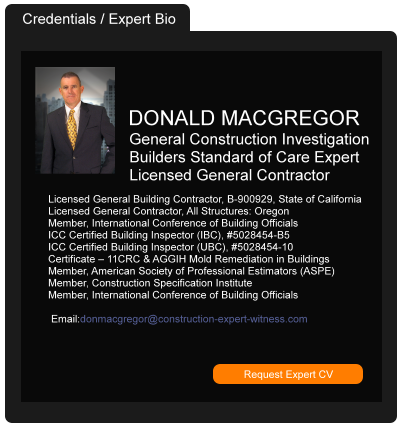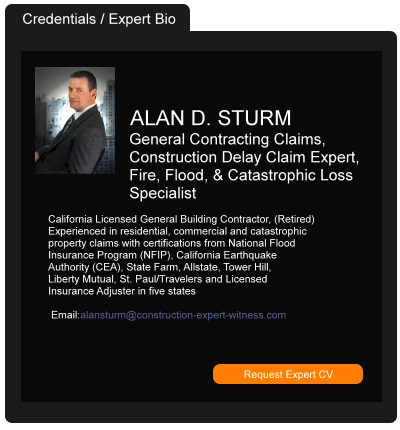No Duty to Defend Suit That Is Threatened Under Strict Liability Statute
July 09, 2014 —
Tred R. Eyerly – Insurance Law HawaiiThe Washington Court of Appeals found there was no duty to defend the insured under a strict liability statute for alleged contamination when no action was threatened by the agency. Gull Indus., Inc. v. State Farm Fire and Cas. Co., 2014 Wash. App. LEXIS 1338 (Wa. Ct. App. June 2, 2014).
Gull leased a gas station to the Johnsons from 1972 to 1980. In 2005, Gull notified the Department of Ecology (DOE) that there had be a release of petroleum product at the station. DOE sent a letter acknowledging Gull's notice of suspected contamination. In 2009, Gull tendered its defense to its insurer, Transamerica Insurance Group. Gull also tendered its claims as an additional insured to the Johnson's insurer, State Farm. Neither insurer accepted the tenders.
Gull then sued the insurers, arguing they had a duty to defend. Gull contended that because the state statute imposed strict liability, the duty to defend arose whether or not an agency had sent any communications about the statute or cleanup obligations. The insurers moved for partial summary judgment. The trial court ruled in favor of the insurers.
Read the court decisionRead the full story...Reprinted courtesy of
Tred R. Eyerly, Insurance Law HawaiiMr. Eyerly may be contacted at
te@hawaiilawyer.com
Land a Cause of Home Building Shortage?
June 17, 2015 —
Beverley BevenFlorez-CDJ STAFFDiana Olick of CNBC reported that builders are not keeping up with the housing demand due to a lack of supply of developed lots as well as the increasing price of available land.
"You have to find the land, you've got to be able to buy it and you've got to persuade someone to let you develop it. The one you hear the most about is the last one," Paul Emrath, vice president of survey and housing policy research at the National Association of Home Builders (NAHB), told CNBC.
Olick wrote that “[l]and prices have actually surpassed their peak values in many markets where builders are particularly active, especially in Texas.”
Read the court decisionRead the full story...Reprinted courtesy of
Update: Lawyers Can Be Bound to Confidentiality Provision in Settlement Agreement
January 13, 2020 —
Danielle Ward, Esq. - Balestreri Potocki & HolmesIn July 2019, the California Supreme Court ruled that an attorney’s signature under the often-used phrase “approved as to form and content” does not preclude a finding that the attorney could be bound to the terms of a settlement agreement. (Monster Energy Co. v. Schechter (2019) 7 Cal.5th 781.) This decision marks a reversal of the Fourth District Court of Appeal’s 2018 ruling that approval of a contract is not tantamount to an agreement to be bound by that contract.
The underlying action stemmed out of a wrongful death suit by Wendy Crossland and Richard Fournier, parents of the decedent, against Monster Energy Company. The parties negotiated a settlement, a critical of element of which was a confidentiality provision aimed at keeping the the settlement secret.
The confidentiality provision prohibited plaintiffs and their counsel of record from disclosing both the existence of the settlement, or the terms thereof, to any person, entity, or publication, including the legal website Lawyers & Settlements. The attorneys signed the agreement under the phrase “approved as to form and content.”
Shortly after the settlement agreement was executed, the Plaintiffs’ attorney Bruce Schechter disclosed his clients’ settlement with Monster in an interview with Lawyers & Settlements. Monster filed suit against Mr. Schechter for breach of contract, among other causes of action. Mr. Schechter challenged the lawsuit with a SLAPP motion, essentially arguing that the lawsuit was meritless and merely an attempt to thwart freedom of speech.
The trial court denied Mr. Schechter’s motion as to the breach of contract cause of action finding that the settlement clearly contemplated that the attorneys were subjected to the terms of the agreement, and Schechter’s claim that he was not a party because he merely approved as to form and content was “beyond reason.”
The Fourth District Court of Appeal reversed, concluding that Mr. Schechter was not a party to the agreement by virtue of his signature approving the form and content, and the Plaintiffs had no authority to bind their attorney to the terms of the agreement. The Court of Appeal found that by affixing his signature to the agreement Mr. Schechter was merely manifesting his “professional thumbs up” in line with legal industry’s customary understanding.
In its reversal, the California Supreme Court did not disturb the legal community’s understanding of the phrase “approved as to form and content.” Rather, the Court concluded that an attorney’s signature under that often-used phrase does not preclude as a matter of law that the attorney intended to be bound by the agreement. The entire agreement, including the substantive provisions, need to be examined to determine the attorney’s intent in affixing his/her signature to the agreement.
Turning to the Crossland/Fournier Monster settlement agreement, the Court was unpersuaded by Mr. Schechter’s argument that he was not bound to the agreement because counsel was not included in the definition of “party”. The Court stated that it’s the substance of the agreement that determines whether counsel is a party to the contract, as opposed to a party to the lawsuit.
The Court was persuaded, in part, by the important role that confidentiality plays in brokering settlements. It noted that public disclosure of private settlements would serve to “chill” parties’ ability to resolve matters short of trial, and there was little doubt that confidentiality was an important term of the Crossland/Fournier Monster settlement. In concluding that Monster had met its burden to defeat an anti-SLAPP motion, the Court pointed to the numerous references to counsel in the substantive provisions of the agreement which a trier of fact could conclude bound Mr. Schechter to the confidentiality terms.
Danielle Ward has concentrated her law practice on defending developer, general contractor, and subcontractor clients in a variety of construction matters. She has been an attorney with Balestreri Potocki & Holmes since 2010 and can be reached at dward@bph-law.com.
Read the court decisionRead the full story...Reprinted courtesy of
State Supreme Court Cases Highlight Importance of Wording in Earth Movement Exclusions
June 21, 2017 —
Hannah E. Austin - Saxe Doernberger & Vita, P.C.In Erie Insurance Property and Casualty Company v. Chaber, the West Virginia Supreme Court recently
held that an insurance policy’s earth movement exclusion was unambiguous and applied to both manmade
and natural earth movement. The Court also found that a narrow “ensuing loss” exception to the exclusion
that provided coverage for glass breakage resulting from earth movement could not be extended to cover the
entire loss.
The Erie Insurance Property and Casualty Company (Erie) insured five commercial buildings owned by
Dmitri and Mary Chaber. One of the properties was damaged by a landslide, and the Chabers filed a claim
with Erie. Erie asserted that the loss was excluded from coverage because the policy excluded coverage for
losses caused by earth movement, which was defined to include earthquakes, landslides, subsidence of
manmade mines, and earth sinking (aside from sinkhole collapse), rising or shifting. The exclusion stated
that it applied “regardless of whether any of the above . . . is caused by an act of nature or is otherwise
caused,” and also contained an anti-concurrent causation clause. However, there was an exception for glass
breakage caused by earth movement.
Read the court decisionRead the full story...Reprinted courtesy of
Hannah E. Austin, Saxe Doernberger & Vita, P.C.Ms. Austin may be contacted at
hea@sdvlaw.com
Court Dismisses Coverage Action In Lieu of Pending State Case
July 25, 2021 —
Tred R. Eyerly - Insurance Law HawaiiThe insurer's coverage action was dismissed by the federal court in favor of the pending case in state court. Southern-Owners Ins. Co. v Marquez, 2021 U.S. Dist. LEXIS 108125 (S.D. Fla. May 4, 2021).
The underlying lawsuit was filed because of of an incident involving a golf cart on a sidewalk owned by the AOAO. The Marquezes owned the golf cart that injured the Murphy's child.
Southern-Owners issued a CGL policy to the AOAO. The Marquezes submitted a claim to Souther-Owners for coverage in the underlying lawsuit as additional insureds under the policy. Southern-Owners defended the AOAO and the Marquezes in the underlying lawsuit pursuant to a reservation of rights. The underlying complaint alleged that the Marquezes negligently permitted their daughter to operate the golf cart on the AOAO's pedestrian walkway. Further, the AOAO negligently failed to reasonably maintain the premises.
Read the court decisionRead the full story...Reprinted courtesy of
Tred R. Eyerly, Damon Key Leong Kupchak HastertMr. Eyerly may be contacted at
te@hawaiilawyer.com
New Orleans Terror Attack Lawsuit Targets Engineer Mott MacDonald, Contractor and City
February 03, 2025 —
Richard Korman - Engineering News-RecordSeven victims who survived the New Year's morning terrorist truck attack on Bourbon Street in New Orleans have filed a negligence lawsuit in state court, in that city, blaming city officials, engineer Mott MacDonald and a contractor for the deaths.
Read the court decisionRead the full story...Reprinted courtesy of
Richard Korman, Engineering News-Record
Administration Seeks To Build New FBI HQ on Current D.C. Site
February 28, 2018 —
Tom Ichniowski – ENRA Senate committee plans to examine a new $3.3-billion Trump administration proposal to demolish the Federal Bureau of Investigation's worn, outmoded headquarters in downtown Washington, D.C., and construct a new facility on that site.
Read the court decisionRead the full story...Reprinted courtesy of
Tom Ichniowski, Engineering News-RecordMr. Ichniowski may be contacted at
ichniowskit@enr.com
Policy's Limitation Period for Seeking Replacement Costs Not Enforced Where Unreasonable
March 12, 2014 —
Tred R. Eyerly – Insurance Law HawaiiThe New York Court of Appeals determined that a two year period for obtaining replacement costs for damage to property was unenforceable where the property could not be reasonably replaced in two years. Executive Plaza, LLC v. Peerless Ins. Co., 2014 WL 551251 (N.Y. Ct. App. Feb. 13, 2014).
Plaintiff's office building was severely damaged in a fire on February 23, 2007. It cost more than a million dollars to restore the building to its previous condition. Plaintiff had $1 million in coverage from Peerless. The policy provided that replacement costs for any loss would be paid after the damaged property was repaired. The insured was required to make the repairs as soon as possible. Further, the policy provided that any legal action against the insurer had to be brought within two years of the loss.
Peerless paid the "actual cash value" of the destroyed building pursuant to the policy in the amount of $757,812.50. Peerless informed the plaintiff that it would have to provide documentation of the completion of repairs to collect the full replacement value, another $242,187.50.
Read the court decisionRead the full story...Reprinted courtesy of
Tred R. Eyerly, Insurance Law HawaiiMr. Eyerly may be contacted at
te@hawaiilawyer.com


































































